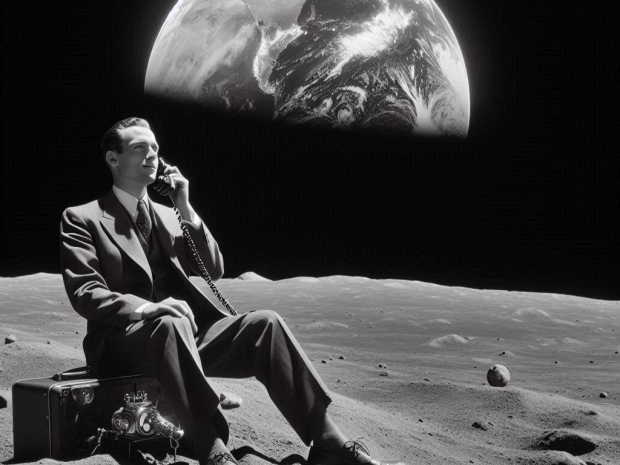Traditional lunar communications have relied on point-to-point radio, which requires a clear line of sight between transmitting and receiving antennas. With increased activity expected on the moon under NASA’s Artemis program—bringing astronauts back by 2028 and establishing a permanent habitat in the 2030s—a shift to mobile networking could significantly improve connectivity.
Nokia Bell Labs Solutions Research head Thierry Klein said early lunar communications used UHF and VHF technologies, connecting only a small number of devices with low data throughput.
Nokia, contracted by NASA in 2020, has since developed a lunar-compatible 4G network designed to withstand extreme temperatures, radiation, and vibrations.
This "network in a box" will be housed on the lander and powered by its solar panels, providing coverage for the IM-2 mission’s vehicles. However, due to the harsh lunar environment, the system is expected to function only for a few days before being rendered inoperable by the frigid lunar night.
Nokia envisions a more expansive 4G or 5G network supporting the Artemis habitat and integrating with Axiom’s lunar spacesuits. A single base station could potentially cover the entire area, though multiple units may be necessary, much like terrestrial mobile networks.
The project has met resistance from the scientific community. LTE frequencies (700 MHz - 2.6 GHz) overlap with bands used for radio astronomy, raising concerns about interference.
Chris De Pree of the National Radio Astronomy Observatory (NRAO) cautioned that lunar LTE signals could disrupt sensitive telescopes, while NRAO spectrum manager Harvey Liszt highlighted regulatory issues—4G frequencies are not approved for lunar use under ITU-R regulations.
Nokia has secured a waiver for the IM-2 mission, but permanent deployment will require a shift to alternative frequency bands.
Klein remains optimistic, stating that their technology will remain compatible with Earth’s 4G and 5G networks even after frequency adjustments. In theory, if a smartphone could survive the lunar environment, it would connect to Nokia’s network—so long as it had the correct SIM card.




